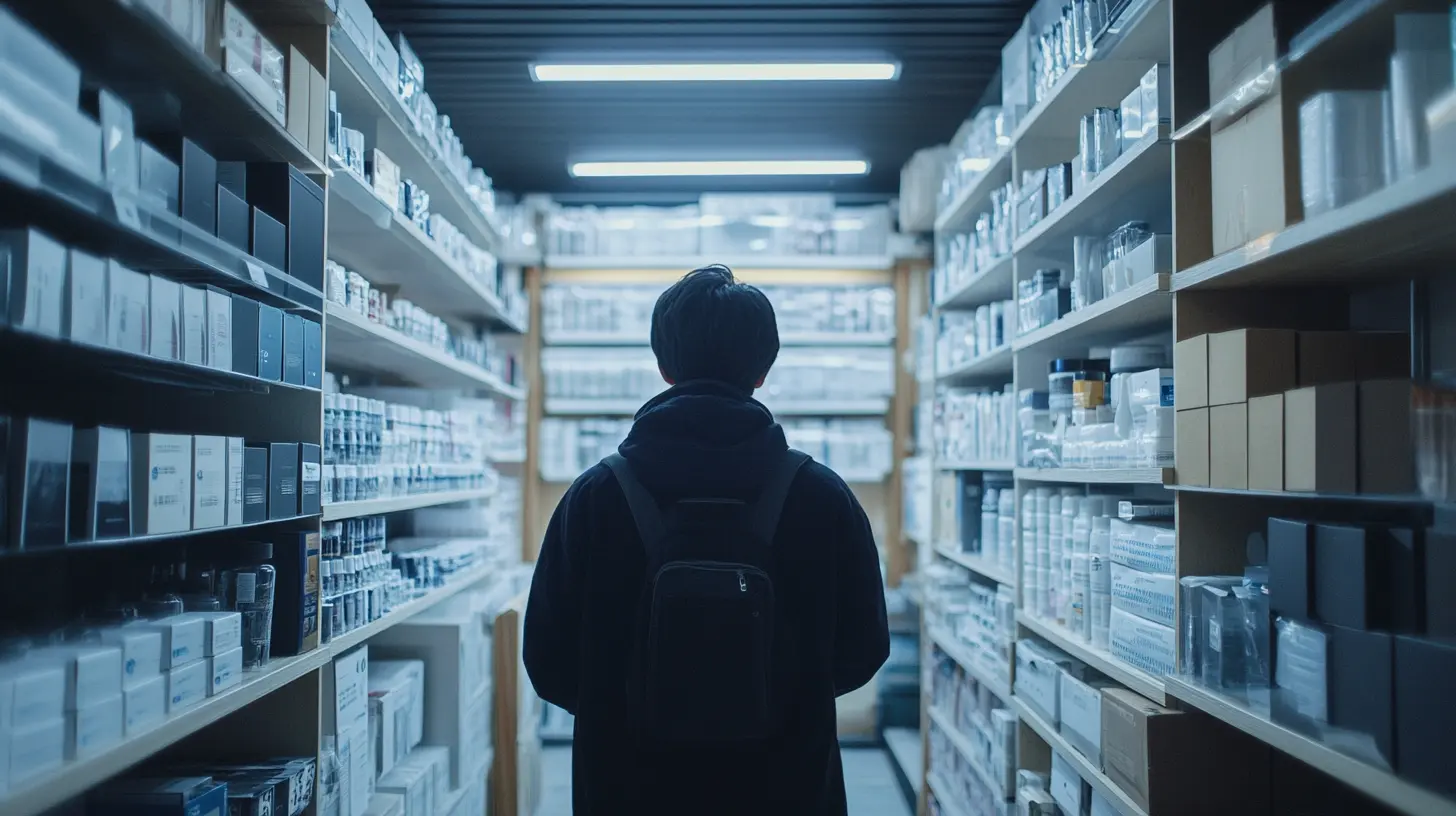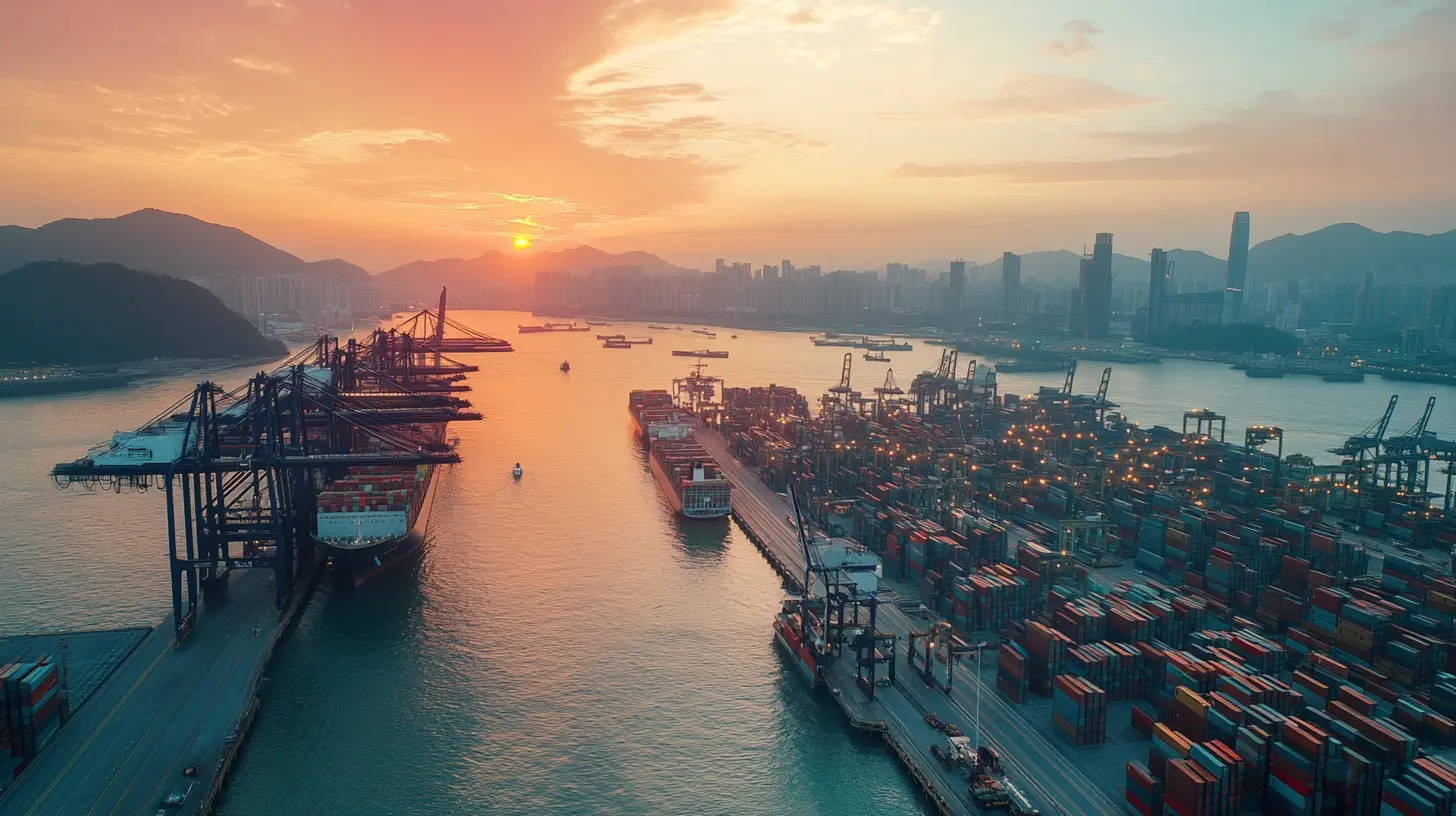In an increasingly interconnected world, the global market for prescription lenses is projected to reach USD 9.94 billion by 2025, exhibiting a compound annual growth rate (CAGR) of 5.6% from 2020 to 2025. As consumers become more aware of the importance of eye health, the demand for high-quality prescription lenses continues to rise. Navigating the complexities of international trade regulations is critical for companies like JINRUISHI Optical Glasses Co., Ltd., which specializes in a variety of mainstream lenses including CR39 sunglasses lenses, CR39 polarized lenses, and an assortment of photochromic lenses.
To effectively source and distribute prescription lenses globally, businesses must stay abreast of varying regulatory standards, tariffs, and compliance requirements that differ from country to country. Effective management of these factors can provide a significant competitive advantage, allowing companies not only to meet the growing consumer demand but also to ensure the quality and safety of the products they offer. As JINRUISHI Optical Glasses Co., Ltd. expands its international footprint, understanding these regulations becomes essential for maintaining market integrity and consumer trust in its innovative blue light blocking lenses and more.

In the ever-evolving eyewear market, understanding global sourcing trends for prescription lenses is essential for manufacturers and retailers looking to remain competitive. As consumer demand rises for fashionable and functional eyewear, the pressure is on companies to source high-quality lenses from reliable international suppliers. This has led to a growing trend of diversifying supply chains to mitigate risks associated with single-source dependencies. One significant trend is the increasing reliance on technologically advanced manufacturing hubs, particularly in regions such as Asia and Europe. These areas not only provide cost-effective production solutions but also host cutting-edge technology that enhances lens quality and production efficiency. Companies are now prioritizing partnerships with manufacturers that uphold strict quality controls and adhere to international standards, ensuring that the final product meets the diverse needs of consumers while complying with regulatory requirements. Sustainability has also emerged as a vital factor in sourcing prescription lenses. Brands are becoming more conscious of their environmental impact and are seeking suppliers who implement eco-friendly practices. This shift not only appeals to a growing demographic of environmentally conscious consumers but also aligns with global efforts to reduce carbon footprints throughout the production and distribution processes. Emphasizing transparent sourcing and ethical practices, companies are finding that sustainability can be a distinctive competitive edge in a crowded market.

Navigating the complexities of international trade regulations is crucial for companies sourcing prescription lenses globally. As businesses expand their supply chains across borders, they must adhere to various trade regulations that can significantly affect their operations. Key regulations, such as customs policies, trade agreements, and international quality standards, govern how prescription lenses are imported and exported, making it essential for companies to stay informed.
One major aspect to consider is the Harmonized System (HS) codes, which classify products for customs purposes. Proper classification ensures accurate tariffs are applied, avoiding unexpected costs that can impact pricing and profitability. Additionally, companies must remain vigilant about evolving trade agreements, such as the United States-Mexico-Canada Agreement (USMCA) or the European Union's trade policies, which can alter the landscape of sourcing prescription lenses. Understanding these agreements can offer strategic advantages, including reduced tariffs and improved market access.
Moreover, ensuring compliance with international quality standards, such as ISO certifications, is vital for maintaining product integrity and consumer safety. These standards not only enable businesses to market their products confidently but also help in building trust with consumers and partners alike. By prioritizing regulatory compliance and staying proactive about changes in the trade environment, companies can effectively navigate the intricacies of sourcing prescription lenses on a global scale.

Navigating international trade regulations in the sourcing of prescription lenses has become increasingly complex, especially in light of recent tariff developments. Industry reports indicate that nearly half of the medicines consumed in the United States are imported from India, and proposed tariffs on pharmaceuticals, including materials used in prescription lenses, could significantly raise their costs. The Vision Council has highlighted that many countries are currently benefiting from a 90-day reprieve from elevated tariffs, yet Chinese imports face an alarming 145% reciprocal duty rate. This creates a challenging environment for optical businesses trying to manage their sourcing and pricing strategies effectively.
The implications of these tariffs extend beyond just price increases. Experts warn that the ripple effect of the looming tariffs could lead to drug shortages, as companies may struggle to absorb the additional costs while maintaining inventory levels. Recent analyses suggest that companies in the optical industry, which are accustomed to operating on thin margins, may face tough decisions about their pricing structures as they navigate this turbulent landscape. Industry leaders are already indicating that price hikes are unavoidable, as the costs associated with imported prescription lenses increase due to tariffs.
As firms assess the potential impacts on their supply chains, a careful examination of duty rates and tariffs becomes crucial. Timely sourcing decisions and strategic negotiations with suppliers will be essential to mitigate the negative effects of these regulations. In this high-stakes scenario, businesses must remain agile and informed to succeed in a tighter global market, where tariffs threaten to undermine affordability and access to essential prescription lenses.

Sourcing prescription lenses from Asia and Europe presents a unique set of compliance challenges that businesses must navigate carefully. One significant hurdle is ensuring adherence to the various regulations that differ from one region to another. For instance, European Union regulations emphasize stringent standards for health and safety, which require manufacturers to meet specific quality benchmarks. Conversely, Asian countries may have less rigorous regulations, leading to potential discrepancies in product quality and safety compliance. This divergence necessitates a thorough understanding of both regions' legal frameworks to avoid costly penalties and ensure consumer safety.
Another compliance challenge is the complexity of import and export regulations. Customs procedures can vary significantly between countries, and improper documentation or classification of goods can lead to delays and increased costs. Businesses must invest time in understanding the tariff classifications applicable to prescription lenses to facilitate smoother trade transactions. Additionally, language barriers and different regulatory practices can complicate communications with suppliers, making it crucial for sourcing teams to establish clear protocols and maintain accurate records.
Furthermore, businesses must remain vigilant regarding intellectual property rights when sourcing from overseas. The risk of counterfeit products is heightened in international trade, particularly in regions with lax enforcement of trademark protections. Companies should implement robust quality control measures and collaborate with reputable suppliers to mitigate these risks. As the global landscape for sourcing prescription lenses continues to evolve, adapting to these compliance challenges will be essential for sustainable growth and success in international markets.
When sourcing prescription lenses globally, understanding certification and quality standards is crucial to ensure safety and efficacy. Certification processes serve as a verification mechanism for manufacturers, helping to ensure that their products meet established standards set by health organizations and regulatory bodies. These certifications, such as ISO standards or FDA approval, provide buyers with assurance that the lenses they procure are produced in compliance with stringent safety and quality criteria.
Furthermore, quality standards play a pivotal role in the global supply chain for prescription lenses. They not only dictate the manufacturing processes but also influence the materials used, the precision of production, and the overall performance of the lenses. By adhering to international quality standards, manufacturers can enhance their competitive edge and appeal to a broader market, ensuring that their products are recognized across borders. It is essential for buyers to verify that their suppliers maintain these standards, as a lapse in quality can lead to costly recalls and harm to consumers.
In an increasingly interconnected world, navigating the complexities of international trade regulations while emphasizing certification and quality standards becomes imperative. Businesses looking to source prescription lenses must prioritize partnerships with certified suppliers who adhere to recognized quality benchmarks. This not only protects consumers but also reinforces the credibility of the sourcing company in the global marketplace.
In the rapidly evolving landscape of international trade, technology plays a pivotal role in streamlining the sourcing of prescription lenses globally. By leveraging advanced platforms, companies can efficiently navigate the complex web of regulations that govern cross-border transactions in eyewear products. Technologies such as blockchain and artificial intelligence enhance transparency and accuracy in supply chains, ensuring that businesses remain compliant while meeting the demands of increasing consumer scrutiny.
The integration of digital tools enables real-time tracking of shipments and inventory management, which is crucial for maintaining product quality and safety standards. Furthermore, cloud-based solutions facilitate seamless communication between suppliers, manufacturers, and retailers, fostering collaborative relationships that are essential for success in the global marketplace. By harnessing these technological advancements, businesses can not only expedite their sourcing processes but also mitigate risks associated with fluctuating regulations and varying market conditions.
Moreover, e-commerce platforms have transformed how companies engage with international customers. With user-friendly interfaces and robust payment systems, businesses can effectively market their eyewear products to a broader audience while handling regulatory compliance with ease. As technology continues to redefine the international trade landscape, those who adapt and innovate will undoubtedly gain a competitive edge in the ever-expanding eyewear market.
As global demand for advanced prescription lenses rises, navigating international trade regulations has become crucial for sourcing. The impact of trade agreements cannot be understated; they not only facilitate smoother cross-border transactions but also influence sourcing strategies for companies involved in the optical products market. For instance, a report from the Optical Society estimates that the global eyewear market is poised to reach USD 160 billion by 2025, with prescription lenses accounting for a significant portion of this growth.
Trade agreements between countries can greatly affect the tariffs and regulations applied to these lenses, allowing companies to access new markets and optimize their supply chains. For example, the United States-Mexico-Canada Agreement (USMCA) has provisions that can reduce duties on optical products, enabling companies to source high-quality lenses at lower costs. This is particularly pertinent with recent innovations in eyewear technology, such as Apple's Vision Pro, which highlights the necessity for lenses that can integrate with digital devices and enhance user experience.
Moreover, as highlighted by recent news, the introduction of new devices like the Vision Pro underscores the importance of adapting sourcing strategies to meet evolving market needs. Reports indicate that issues such as incorrectly fitted lenses can lead to significant consumer dissatisfaction, emphasizing the critical nature of quality in prescription lens sourcing. Companies must ensure compliance with international standards while leveraging trade agreements to remain competitive and meet the growing consumer demand for both functionality and aesthetics in prescription eyewear.
The global prescription lens market is expected to see substantial growth, projected to increase from $21.08 billion in 2025 to an impressive $39.58 billion by 2032, reflecting a compound annual growth rate (CAGR) of 8.8% during this period. This robust expansion is primarily driven by the rising prevalence of vision impairment and the increasing adoption of advanced optical technologies. Consequently, companies in the optical industry are navigating a complex landscape of international trade regulations, which are crucial for sourcing and distributing prescription lenses efficiently across borders.
As the market evolves, several key trends are shaping the future of global prescription lens trade. One notable trend is the emergence of smart eyewear, which integrates augmented reality capabilities and artificial intelligence technologies. This innovative approach is anticipated to redefine consumer expectations and present new market opportunities. Furthermore, as major tech players enter the optical sector, competition is expected to intensify, compelling established companies to innovate continuously and adapt their compliance strategies to stay ahead of regulatory changes.
In addition, sustainability has become a significant focus for the industry, with consumers increasingly demanding eco-friendly products. Companies are now challenged to meet regulatory standards concerning material sourcing and manufacturing processes while also aligning with environmental initiatives. By staying informed about international trade laws and responding to market demands, businesses can capitalize on these burgeoning opportunities within the prescription lens market.
The main compliance challenges include adhering to differing regional regulations, managing complex import and export regulations, and protecting intellectual property rights, along with ensuring product quality and safety standards in compliance with local laws.
European Union regulations typically emphasize stricter health and safety standards requiring manufacturers to meet specific quality benchmarks, while Asian regulations may be less rigorous, resulting in potential discrepancies in product quality and safety compliance.
Trade agreements facilitate smoother cross-border transactions by potentially reducing tariffs and regulations, allowing companies to access new markets and optimize supply chains, thereby lowering costs and improving sourcing strategies.
Businesses should implement robust quality control measures, collaborate with reputable suppliers, and remain vigilant regarding intellectual property rights to reduce the risk of counterfeit products.
Key trends include the rise of smart eyewear integrating augmented reality and artificial intelligence, increased competition from tech companies, and a significant focus on sustainability and eco-friendly products.
The global prescription lens market is projected to grow from $21.08 billion in 2025 to approximately $39.58 billion by 2032, reflecting a compound annual growth rate (CAGR) of 8.8%.
With the introduction of advanced eyewear technologies, like Apple's Vision Pro, companies must align their sourcing strategies to meet evolving market needs and consumer expectations for functionality and aesthetic quality in prescription eyewear.
Consumers are increasingly seeking eco-friendly products, prompting companies to meet regulatory standards regarding material sourcing and manufacturing processes while adopting environmental initiatives to align with market demands.






